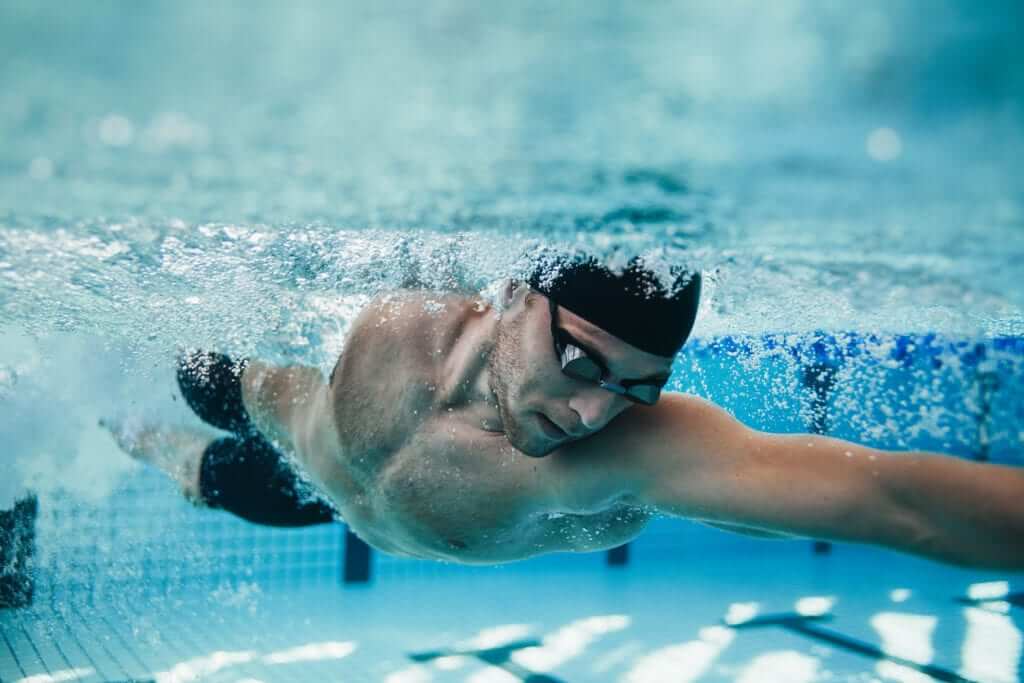Since swimming is often recommended as a low-impact form of exercise for those with recurring joint issues, you may wonder why swimming injuries are common.
The simple answer is that overdemanding workouts and incorrect technique are to blame for most injuries in and around the pool. Read on to find out about the most common types of swimming injuries and how to prevent them. If you are injured at the pool, make sure to see your pain specialist in Orange County at CRPM for immediate pain management.
Swimmer’s Shoulder
Swimmer’s shoulder is the most common pool injury. In addition to improper technique and workload, it can be caused by misuse of swim paddles and pull buoys. “Overzealous stretching” can also be a cause.
Swimmer’s Knee/ Breaststroke Knee
These are two different names for the same condition. The injury occurs during the mechanics of the breaststroke kick. The extension of kicking subjects the knee to an external rotation. This conflicts with the knee’s structural design and causes stress on inner ligaments.
Neck Injuries
If you have a neck injury, it’s probably due to your technique. Swimmers most at risk are those who:
- Don’t keep their head in-line with their spine
- Over-rotate their head
- Increase their distance too much, too soon (not allowing anterior neck muscles sufficient time to adapt and grow stronger.)
Lower Back Injuries
These injuries are primarily caused by lifting the upper body out of the water while keeping the hips and legs fully submerged. This flawed technique causes the back to overarch in compensation. In addition, when you lift your upper body out of the water with your back, instead of moving through the water in an even wave motion, you put “undue stress” on the back muscles and ligaments.
Concussions
All swimmers, not just competitive ones, should be aware of the risks of concussions while swimming. Concussions are traumatic brain injuries that occur due to impact. The impact does not have to occur directly to the head – it can occur elsewhere, and still cause sufficient “jarring” to the brain. Around the pool, concussions most often occur in these scenarios:
- Impact with a pool wall
- Impact with another swimmer
- Falling on the deck
It may be important to note that synchronized swimmers have a particularly high rate of concussion. Awareness of this issue is of utmost importance to pool safety measures.
How to Prevent Swimming Injuries
The main goal of swimming injury prevention is to minimize injury and be able to sustain your exercise regimen for as long as you like. Contact your pain specialist in Orange County at CRPM to answer all your questions about preventing swimming injuries, and if you are already experiencing pain, we can help.
This list of 8 preventative measures was contributed by Rothman Institute.
- Stay hydrated! Being in the water doesn’t mean you don’t still need hydration.
- Eat plenty of protein, produce, calcium, vitamin D, and magnesium to sustain activity levels.
- Work with an athletic trainer or other sports medicine professional to incorporate proper strength training techniques for the lower back, shoulders, hamstrings, quadriceps, and neck.
- Be aware of your surroundings both in and out of the water. Allow plenty of space between yourself and other swimmers.
- Warm up and cool down muscles with appropriate stretching and light aerobic exercises before and after every swim session.
- Alternate swimming strokes regularly to avoid over stressing any one muscle group.
- See your pain specialist in Orange County about all injuries or pain at once. Do not swim through the pain!
- Prioritize proper rest. All athletes should take 1-2 days a week and 1-2 months a year away from their sports to prevent burnout and overuse injuries.
Pain Specialist in Orange County
It is our mission to restore your physical, emotional, and social function when you have pain or injury. Centers of Rehabilitation and Pain Medicine offers different treatments appropriate for treating many conditions, including common swimming injuries. Contact us today!


